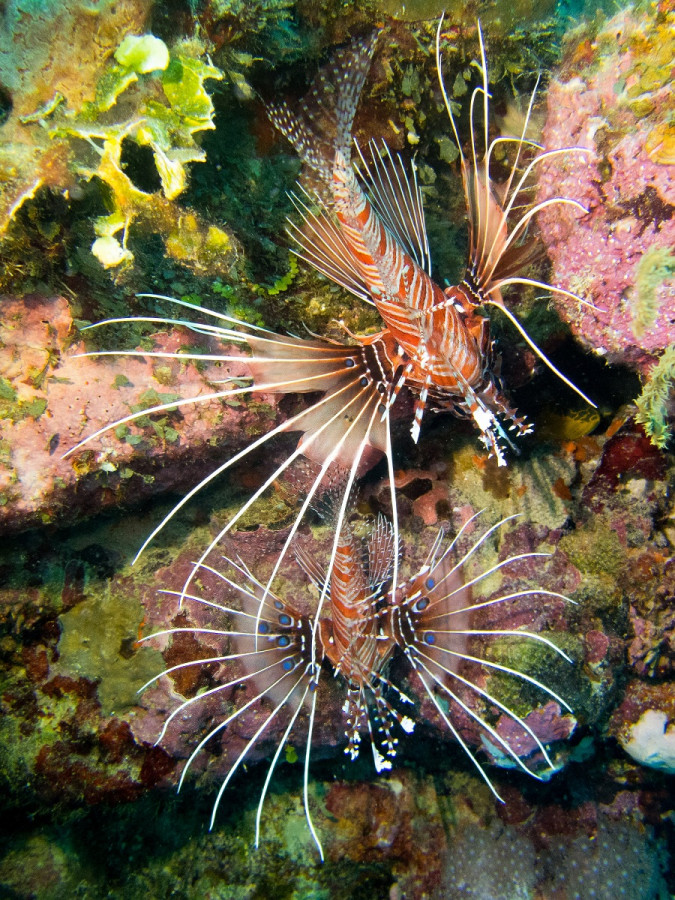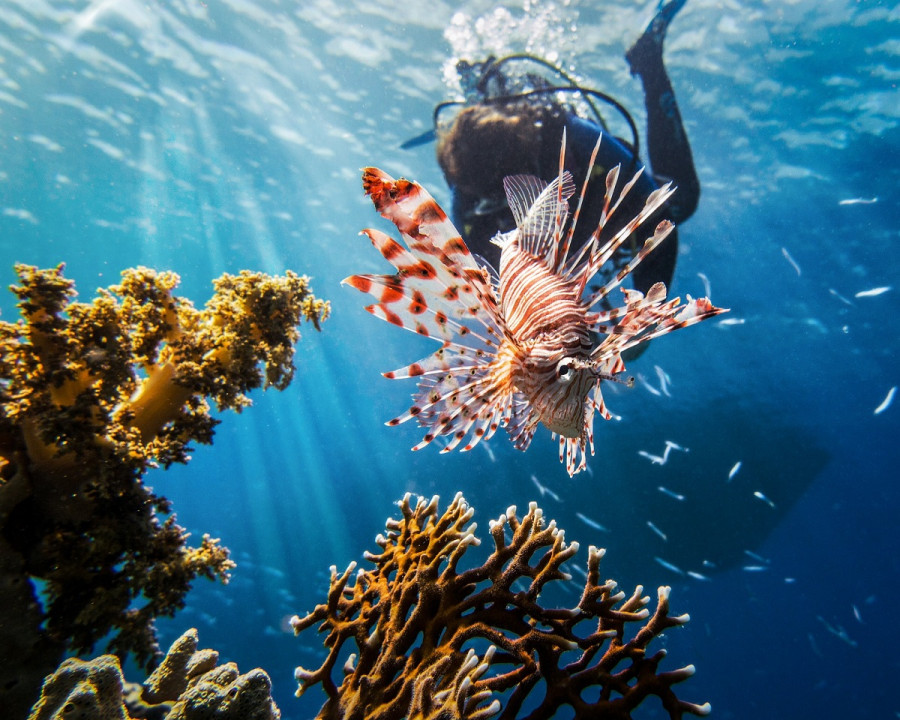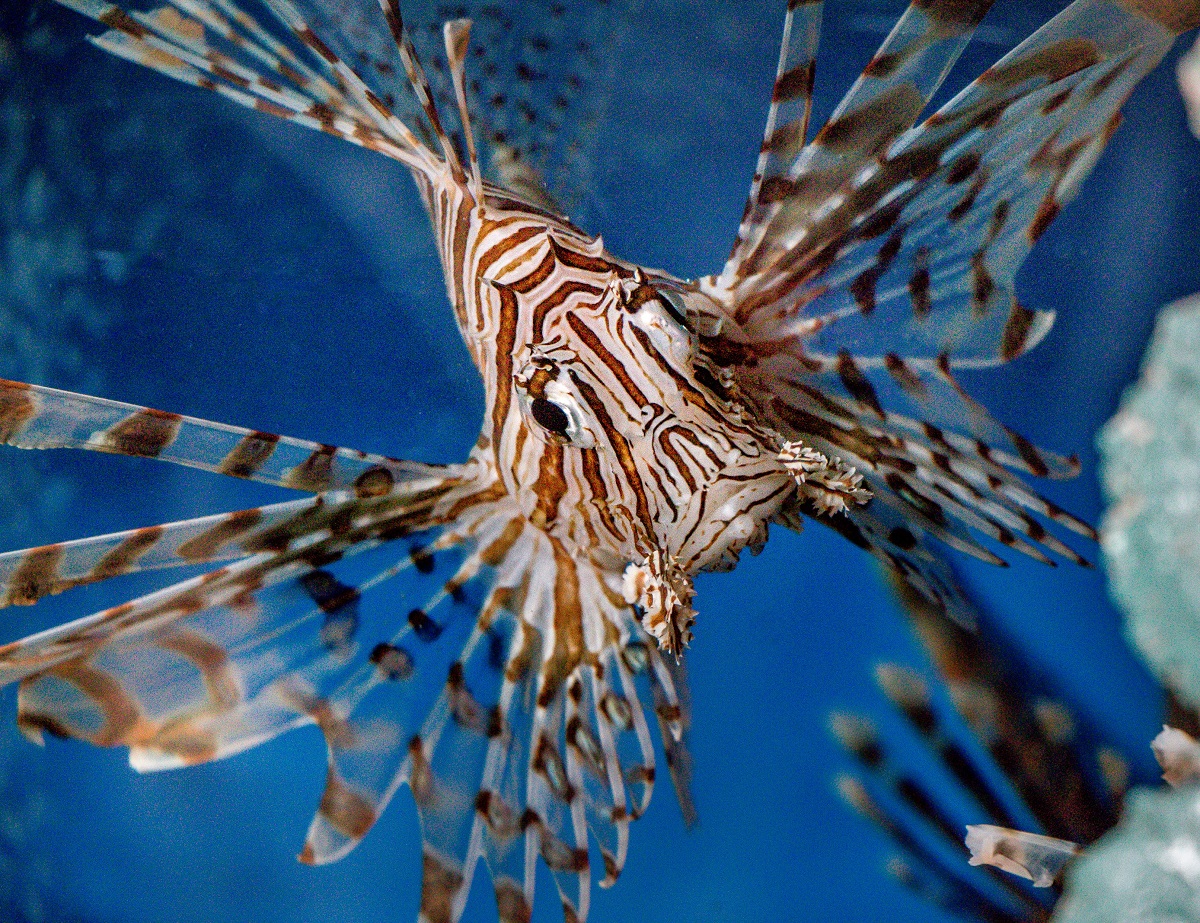The lionfish is spreading throughout the Mediterranean. In its wake, as the species edges ever closer to the shores of Monaco, it leaves behind devastated ecosystems and crippled fishing industries. So what can be done to stop it?
During Monaco Ocean Week, Enrico Toja and his team from the Elafonisos Eco Association held a conference on ‘The Lionfish Threat’ at the Yacht Club de Monaco. In sobering terms, he revealed the very serious – and very pressing – matter of halting its invasion of the Mediterranean.
In an interview with Monaco Life, Toja explains what can be done and why we need to act now.
The fastest growing invasion ever reported in the Mediterranean
Lionfish have been documented in the Mediterranean, notably in Cyprus and Crete, for at least the last decade. Today, they are found throughout the Aegean Sea and populations are rising in the Ionian too.
A native of the Indo-Pacific region, they are believed to have made their way through the Suez Canal as the temperatures of the Mediterranean have warmed significantly in recent years – at a rate 20% faster than the global average, according to a UN report.
“Now we are seeing them in Sicily and Calabria,” says Toja, an Italian native who has been living in the Principality for the last 30 years. “I expect that we will find them in Sardinia by this summer, and in Corsica by the following year. Every year, the Mediterranean gets warmer and, within the next five to six years, if we do nothing to stop them, there will be lionfish swimming in front of the Oceanographic Museum in Monaco, not just in the tanks of its aquarium.”

Many people believe the lionfish to be a deadly and poisonous fish that could kill a human, but this is nothing more than a rumour, says Toja.
“If you come into touch with a lionfish, you’ll get a sting like you would from a jellyfish,” he explains. “After 20 minutes of being killed, they are completely safe to touch and eat. There is no venom left.”
Still, it is this persistent reputation that has caused Enrico and his lionfish-battling vanguard some issues in spreading awareness with their campaign, which began on the Greek island of Elafonisos.
From untouched beauty to a devastated coastline
Toja has been travelling to Elafonisos for a long time. He remembers it when there were no roads, no electricity and virtually no other visitors. This has changed in time, but the island has managed to retain much of its natural, unspoilt beauty. Unless, that is, you look beneath the waves.
Soon after the lionfish was spotted in other southerly parts of the Mediterranean, it was found in Elafonisos.
“The lionfish is a rapidly reproducing species. The females can produce 40,000 eggs every two weeks, more than one million eggs per year,” says Toja. “It is a predator fish that will eat up all the octopus and all the sardines in an area. A lionfish can eat up to six times its weight. I’ve seen them eating – they open their mouths so wide – it’s incredible.”

It was quickly realised that it was a problem, but the ingrained image of the fish as a creature that could fatally harm a human kept many away.
“Most fishermen in Elafonisos were scared of lionfish at the start,” Toja explains. “They’d tell me, ‘No, we can’t touch them, they’ll kill us!’ The fishermen knew the lionfish were a problem, they were aware, but they didn’t understand that if they left the fish alone, lionfish would wipe out all the fish in the area.”
After the launch of the Elafonisos Eco Association, a non-profit organisation that is supported by the Prince Albert II of Monaco Foundation and promotes the fight against the lionfish invasion, the island’s fishing industry got onboard and was soon pulling up nets full of the fish.
“You cannot just have one island that is completely safe”
Elafonisos might be doing all it can to pull lionfish out of its waters – as many as 200 per day for the skilled spearfishing diver and 100 a day for fishermen with nets – but, as Toja explains, “You cannot just have one island that is completely safe.”
The Mediterranean is not getting any cooler any time soon, so the lionfish aren’t going to be driven out that way, and there is no major predator in the sea that can pick off such strong numbers. The best predator out there is… Us.
Soon to be staple on the menus of the Principality?
A flaky white fish, often described as similar to mahi mahi and grouper, it is “very, very, very good”, according to the former Vice-President of Europe for Johnson & Johnson.
View this post on Instagram
“Ceviche, grilled, fried, in soups… It is a delicious fish,” he says. “Our big ambition is to have lionfish on the menu in the Hôtel de Paris and the Hôtel Hermitage and all the other great restaurants in Monaco. Monaco has already shown itself to be a great actor in preserving biodiversity, Prince Albert does a lot of work in this field. For me, Monaco could become the leading nation for studies of lionfish and concrete action plans to stop its invasion.”
Doctor Nathalie Hilmi of the Centre Scientifique de Monaco visited Elafonisos last year, and two of her Masters’ students have spent time analysing the situation on the island. Prince Albert is expected to travel out there during the summer to see the work being done on the ground.
“We need to start with educating the consumer,” says Toja on the delectability of the fish. “We need a supply chain and distribution; we need to see it fresh and frozen in fish counters.”
Responsible consumption, but from a new standpoint
It’s a far cry from the usual call of environmentalists, who more often than not advise us of which fish to avoid eating in order to protect stocks. Here it is the opposite: eat lionfish, is the message, and eat plenty of it to preserve the Mediterranean’s ecosystem from an irrevocable threat. This is not just about Monaco, of course, but the entire and interlinked Mediterranean Sea.
Toja and his team are taking inspiration from the Michelin-starred Colombian chef Jorge Rausch of Criterión in Bogotá, who has championed the use of lionfish in cuisine, noting its impeccable flavour and the positive impact its consumption can have on the recovery of native species.
View this post on Instagram
“We could just kill the lionfish and throw them back to the sea for other fish to eat,” says Toja, “and you can even make jewellery from some parts of the fish… But I think we should be eating it.”
What better excuse could there be for encouraging an industry that solves a potentially deadly problem?
Now we must just wait for restaurants in the Principality to catch on to the idea. Hopefully it is not too long before this tasty – and beautiful – fish starts appearing on our plates.
Sign up for the Monaco Life newsletter. For the latest news, follow us on Facebook, Twitter, and Instagram.
Main photo: Ray Harrington
